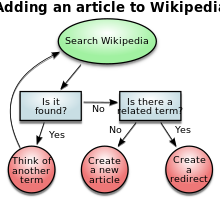

Social Psychologists have used this theory to explain and predict coping mechanisms and people’s patterns of emotionality. The main controversy surrounding these theories argues that emotions cannot happen without physiological arousal. Thus the sequence of events is as follows: event, thinking, and simultaneous events of arousal and emotion.
#Richard lazarus appraisal theory example how to#
In the absence of physiological arousal we decide how to feel about a situation after we have interpreted and explained the phenomena. These models both provide an explanation for the appraisal of emotions and explain in different ways how emotions can develop. There are two basic approaches the structural approach and process model. The important aspect of the appraisal theory is that it accounts for individual variances of emotional reactions to the same event.Īppraisal theories of emotion are theories that state that emotions result from people’s interpretations and explanations of their circumstances even in the absence of physiological arousal (Aronson, 2005). (Scherer et al., 2001) Reasoning and understanding of one’s emotional reaction becomes important for future appraisals as well. On the other hand, if the date is perceived negatively, then our emotions, as a result, might include dejection, sadness, emptiness, or fear. starting a new relationship, engagement, or even marriage. If the date is perceived as positive, one might feel happiness, joy, giddiness, excitement, and/or anticipation, because they have appraised this event as one that could have positive long term effects, i.e. An example of this is going on a first date. Essentially, our appraisal of a situation causes an emotional, or affective, response that is going to be based on that appraisal. No matter what, we can always detect happiness, sadness, shock, and fear on other people's faces.Appraisal theory is the idea that emotions are extracted from our evaluations (appraisals) of events that cause specific reactions in different people. Research by Paul Ekman and his colleagues suggests that facial expressions are universal. Men, on the other hand, are stereotyped as being angry. Women are better at reading emotional cues and are stereotyped as being gentle and emotional. Some people can mask their physical responses, so fMRIs are actually more effective when finding out who lies. Sometimes, a polygraph is used to detect lies based on your body's physical response. We find it difficult to figure out who is lying. Angry faces, voices, and negative words tend to pop out to us. We are really good at finding nonverbal threats. When we feel positive emotions, the left prefrontal cortex lights up.īody language speaks volumes about your emotions. When we feel negative emotions, the right prefrontal cortex lights up. They mainly differ in where the brain activates:įear and anger are both very similar, but fear provokes more activity💡 in our amygdala. Facial Expression and EmotionsĮmotions are very similar, there are only subtle differences between them. These include fear, anger, and happiness. Our body's adaptive response motivates adaptive response for survival. LazarusĬognitive appraisal of the environment leads us to activate physiological arousal and emotional experience.Īn example of this is, “Is it dangerous or not? That sound is 'just the wind.'” 3 Primary Emotions (Evolution) Lazarus, Schachter, and Singer believed that memories, expectations, and interpretations always influence our emotional responses. Zajonc and LeDoux believed that not all emotional responses involve cognition. This theory said that emotion is the result of a physiological response, which in turn activates the emotion, which is the opposite of the common sense theory.Īn example of this is, "we feel sad because we cry, angry because we tense up, and afraid because we tremble.” 💡 Tl dr-Emotion -> Physiological response James-Lange Theory This was like the instinct theory in motivation it didn't really stick and make sense to other psychologists, so they came up with their own theories after it.

An example of this would be, "I'm scared so I tremble." Common Sense Theoryįirst, there was the common sense theory that said first you feel the emotion, and then the physiological response. They help us stay focused at stressful times and keep us alert at cautious times🚨. What we know, in general, is that our emotions helped us survive as well.

Just like with motivation, there are tons of different theories of emotion. Emotion is a response of the whole organism involving physiological arousal ❤️, expressive behaviors🚶, and conscious experience 🤔 Theories of Emotion


 0 kommentar(er)
0 kommentar(er)
